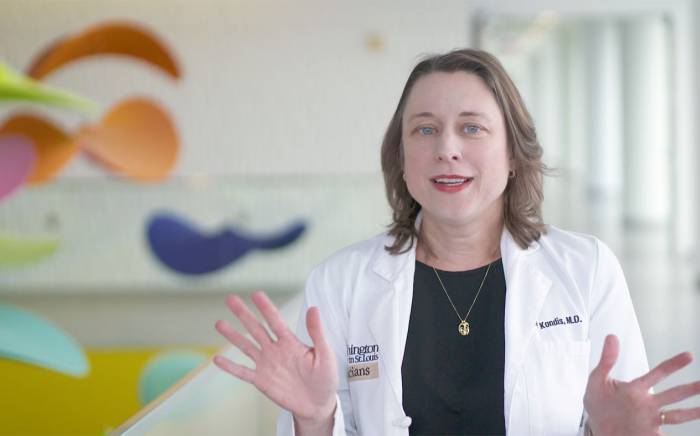School bells will be ringing again soon, and with that sound comes the time for children to look, listen and learn. Could your child have any issues with seeing and hearing that can affect learning?
Listen Up about Hearing Loss
Your child may have already been screened for hearing loss as a newborn. More than 30 states in the U.S. have mandatory hearing screenings of newborns before they go home from the hospital.
“By 3 months old, all babies should be screened for hearing loss so that treatment can begin before the age of six months since this is an important time for speech and language development,” says Sue Griffard, a nurse on St. Louis Children’s Hospital Answer Line.
While some types of hearing loss are present at birth, others are acquired later due to loud noise exposure, trauma, infections and damage from some medications. Excessive wax, foreign objects in the ear canal, such as beads or popcorn kernels, or eardrum perforation or tumors can also cause hearing loss.
Adolescents and teenagers may experience hearing loss due to frequent exposure to loud noises such as music from earphones. Fifteen in 1,000 children under age 18 have some degree of hearing loss, including trouble hearing high-pitched sounds. Eventually these teens may have difficulty hearing lower frequencies, which encompasses the level of most conversations.
Other symptoms of hearing loss that can make it difficult to hear a teacher in a classroom include:
- ringing in the ears
- sense of fullness in the ears
- voices or other noises sounding muffled or distorted
Hearing loss can be managed in a variety of ways, including certain procedures or therapies, hearing aids, cochlear implants or training in sign language and lip reading.
Keep an Eye Out for Vision Problems
Vision problems can develop anytime, too, but often are more obvious in school-age children. For example, a child may realize she has trouble reading the board when she is sitting at the back of a classroom.
Between age 6 and adolescence, nearsightedness, or myopia, is the most common vision problem that develops. With nearsightedness, children can’t see distant objects clearly. Another common eye problem is farsightedness, or hyperopia, when children can’t see clearly in front of them. Reading can be difficult since the words may appear blurry. Eyeglasses can help children with either nearsightedness or farsightedness see more clearly.
Many other vision problems can affect children, too. Children should have their eyes examined at birth, again by 6 months old, at 3 to 4 years old, and annually from age 5 and up.
Warning signs of a vision problem include:
- eyes that look crossed, turn out or don’t focus together
- white, grayish-white or yellow-colored material in the pupil (the normally black center of the eye)
- bulging eyes
- eye pain, itching or discomfort that doesn’t go away
- redness in either eye that doesn’t go away in a few days
- chronically watery eyes
- drooping eyelids
- excessive rubbing or squinting of the eyes
- light sensitivity
- changes in the eyes from how they usually look
Screenings for School Success
To evaluate your child’s hearing and vision, your pediatrician will perform a complete medical history and physical examination. In addition, many different types of hearing and vision tests can be used to check your child's hearing and vision. Some of them may be used on children of all ages, while others are used based on your child’s age and level of understanding.
“Any difficulty seeing the board at school will likely result in assignments being missed or misunderstood,” Griffard says. “Difficulty hearing instructions from teachers will also affect school performance. If your child is starting school, you should make sure he or she has a vision and hearing screening.”












